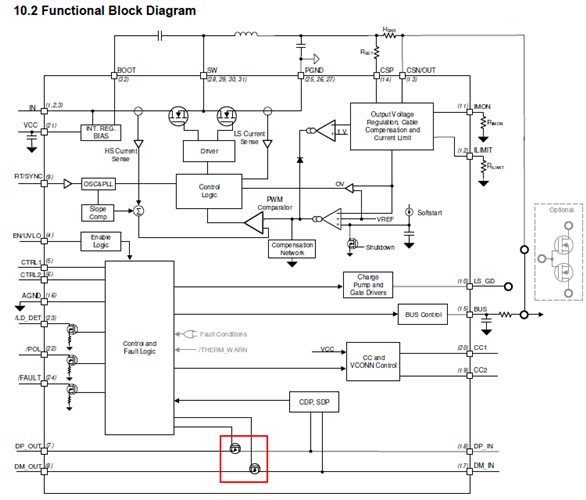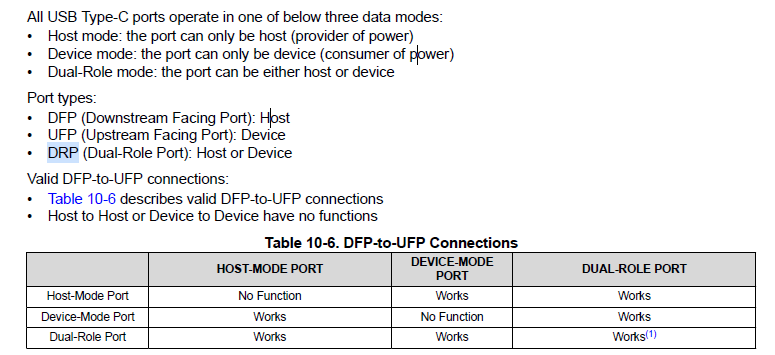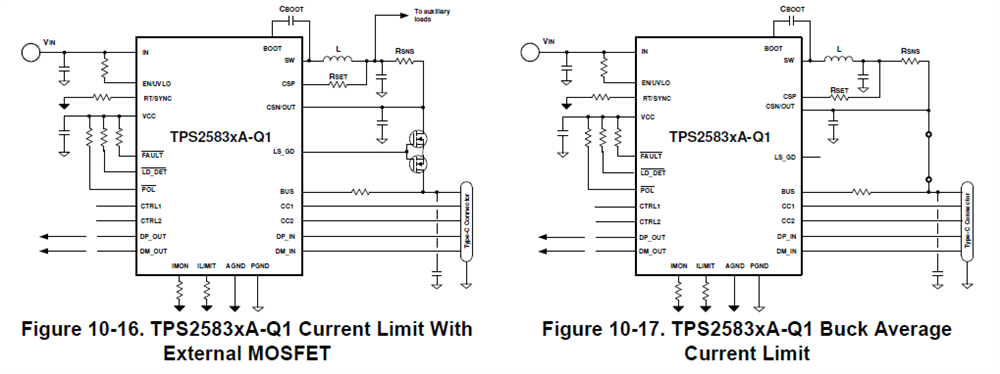Dear TI experts,
Last time I asked a review of the schematic using TPS25830A-Q1 ;
Thanks to your review, initial test is done.
And I have another question from my customer.
They want to use data line with USB 2.0 (and CDP mode), not USB type C.
In this case what should my customer set CC1 and CC2? (pullup or pulldown, and the value of resistor) Could you guide about it?
Best regards,
Chase









